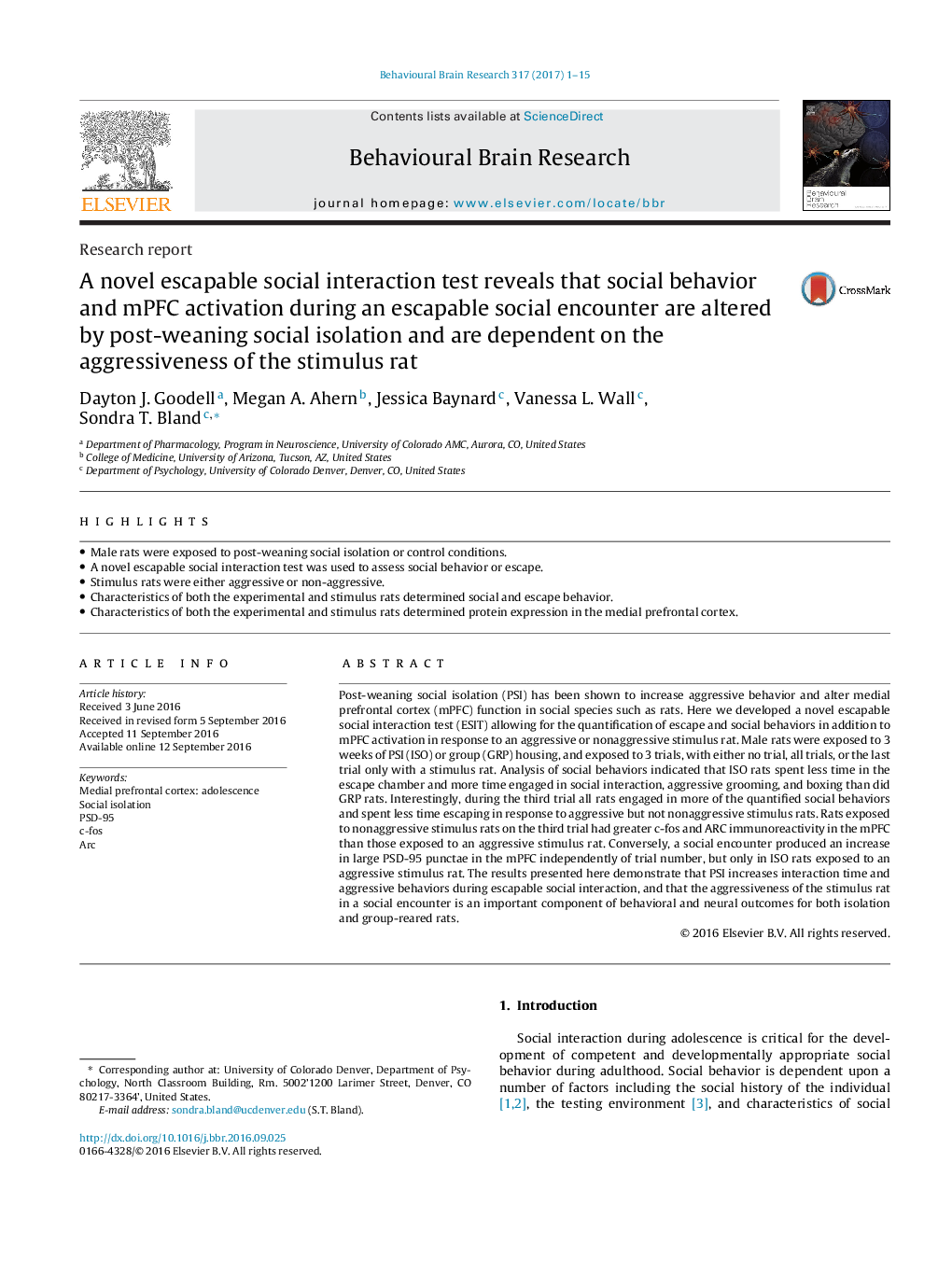| کد مقاله | کد نشریه | سال انتشار | مقاله انگلیسی | نسخه تمام متن |
|---|---|---|---|---|
| 4311944 | 1612916 | 2017 | 15 صفحه PDF | دانلود رایگان |
• Male rats were exposed to post-weaning social isolation or control conditions.
• A novel escapable social interaction test was used to assess social behavior or escape.
• Stimulus rats were either aggressive or non-aggressive.
• Characteristics of both the experimental and stimulus rats determined social and escape behavior.
• Characteristics of both the experimental and stimulus rats determined protein expression in the medial prefrontal cortex.
Post-weaning social isolation (PSI) has been shown to increase aggressive behavior and alter medial prefrontal cortex (mPFC) function in social species such as rats. Here we developed a novel escapable social interaction test (ESIT) allowing for the quantification of escape and social behaviors in addition to mPFC activation in response to an aggressive or nonaggressive stimulus rat. Male rats were exposed to 3 weeks of PSI (ISO) or group (GRP) housing, and exposed to 3 trials, with either no trial, all trials, or the last trial only with a stimulus rat. Analysis of social behaviors indicated that ISO rats spent less time in the escape chamber and more time engaged in social interaction, aggressive grooming, and boxing than did GRP rats. Interestingly, during the third trial all rats engaged in more of the quantified social behaviors and spent less time escaping in response to aggressive but not nonaggressive stimulus rats. Rats exposed to nonaggressive stimulus rats on the third trial had greater c-fos and ARC immunoreactivity in the mPFC than those exposed to an aggressive stimulus rat. Conversely, a social encounter produced an increase in large PSD-95 punctae in the mPFC independently of trial number, but only in ISO rats exposed to an aggressive stimulus rat. The results presented here demonstrate that PSI increases interaction time and aggressive behaviors during escapable social interaction, and that the aggressiveness of the stimulus rat in a social encounter is an important component of behavioral and neural outcomes for both isolation and group-reared rats.
Journal: Behavioural Brain Research SreeTestContent1 - Volume 317, 15 January 2017, Pages 1–15
